

Matt Campbell
2025 Porsche 911 Carrera T review
6 Days Ago
The hardcore 63 Pro version of second-generation Mercedes-AMG GT Coupe brings more accessible performance than its more focussed predecessor.



Quickly see how this car stacks up against its competition. Select any benchmark to see more details.
Where expert car reviews meet expert car buying – CarExpert gives you trusted advice, personalised service and real savings on your next new car.
The Mercedes-Benz SLS AMG and the first-generation Mercedes-AMG GT that succeeded it were ground-breaking cars for the three-pointed star.

Designed from a clean sheet by the German carmaker’s Affalterbach-based AMG go-faster division, both sportsters were purist’s delights.
In stark contrast to the rest of the Mercedes-Benz range, the SLS and GT were configured from the outset with an optimal mid/front-mounted engine and rear transaxle layout.
With the V8 engine (a 6.2-litre naturally aspirated unit in the SLS and a 4.0-litre twin-turbo in the GT) tucked well behind the front axle and the seven-speed dual-clutch automatic gearbox mounted in unison with the rear axle, the SLS and GT had a near-perfect 47:53 front/rear weight distribution.
The GT, in particular, was touted as a legitimate Porsche 911 rival, and the ultimate Black Series limited-edition was a scorchingly fast track weapon, blasting around the daunting Nurburgring Nordschleife in 6:43.616 – in the process eclipsing the likes of the hardcore Porsche 911 GT3 RS (992.1) and Lamborghini Aventador SVJ.
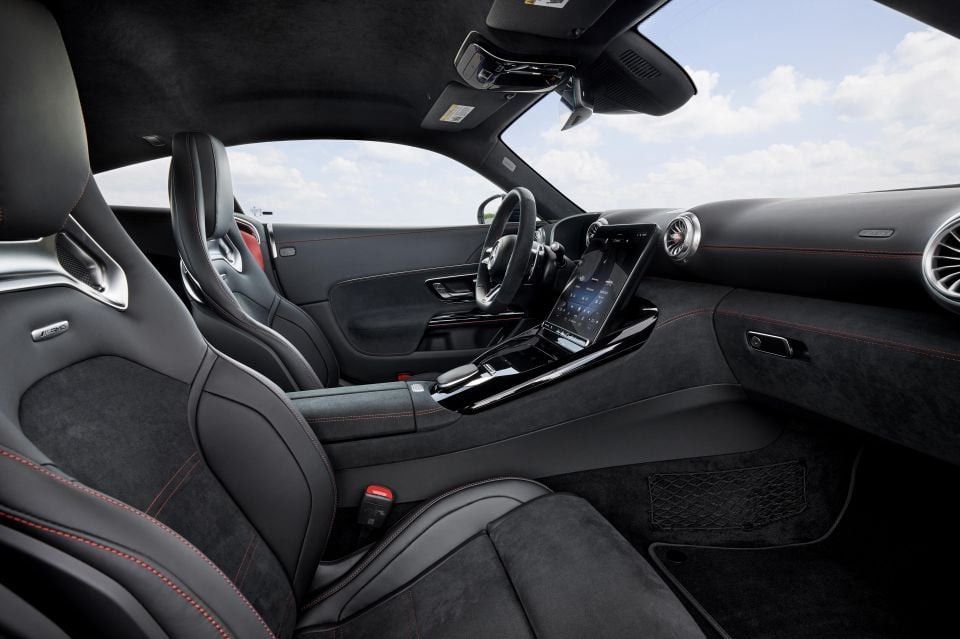
You might question why anyone within the halls of Mercedes-AMG would tamper with such a seemingly ideal recipe, but this time around – for the second-generation GT – everything has changed.
Mercedes-AMG spokesman Jochen Übler says the company has listened to its customers and what they wanted was a car with more day-to-day usability, bolstered by a bigger boot and the availability of rear seats.
This is basically what you get with the MkII GT, a more cossetting and roomy coupe that rides and drives with more compliance and refinement than its uncompromising predecessor.
In order to deliver on these slightly more mundane metrics, Mercedes-AMG has rethought the fundamentals, and the result is a markedly different package, with the engine now slung over the front axle and the transmission (a nine-speed auto with wet start-up clutch in lieu of the old seven-speed dual-clutch gearbox) housed directly behind the engine.

This format yields a less ideal 54:46 weight distribution over the axles, but Mercedes-AMG has been able to deliver on the requirements of a more spacious cabin and a larger boot (now capable of swallowing up to 675 litres), with the former GT’s rear-mounted gearbox no longer eating into the available space.
There will obviously be no drop-top variant of the GT this time around as the current R232 generation SL Roadster, which is based on the same AMG-developed platform, already fulfils that niche.
The second-generation GT 63 is due on sale in our market over the coming months, but there’s as yet no word on when the sharpened GT 63 Pro 4Matic+ Coupe will land locally.
The latter is the subject of this test, following the international launch of the new flagship variant at the Ascari Race Resort in southern Spain.

Although retaining the daily usability of the standard GT, the Pro adds track-worthy credentials to the donor car, with particular focus on its enhanced cooling and aero package.
You also get bigger front brakes (420mm carbon-ceramic discs), while grippy Michelin Pilot Sport Cup 2R semi-slick tyres are offered as a no-cost option.
Australian pricing for the 2025 Mercedes-AMG GT 63 Pro is yet to be announced, but given the new entry-level GT variant is priced from $366,500 plus on-road costs, and its predecessor was launched here with a price of $453,200 plus on-road costs in 2021, expect the new GT Pro to cost well over $450k before on-road costs.
The 2025 Mercedes-AMG GT 63 Pro’s cabin is a mix of classical cool and cutting-edge tech, with the highlights being a 12.3-inch fully digitised instrument cluster and 11.9-inch portrait-oriented touchscreen that controls everything – ranging from drive modes to climate control, to infotainment.
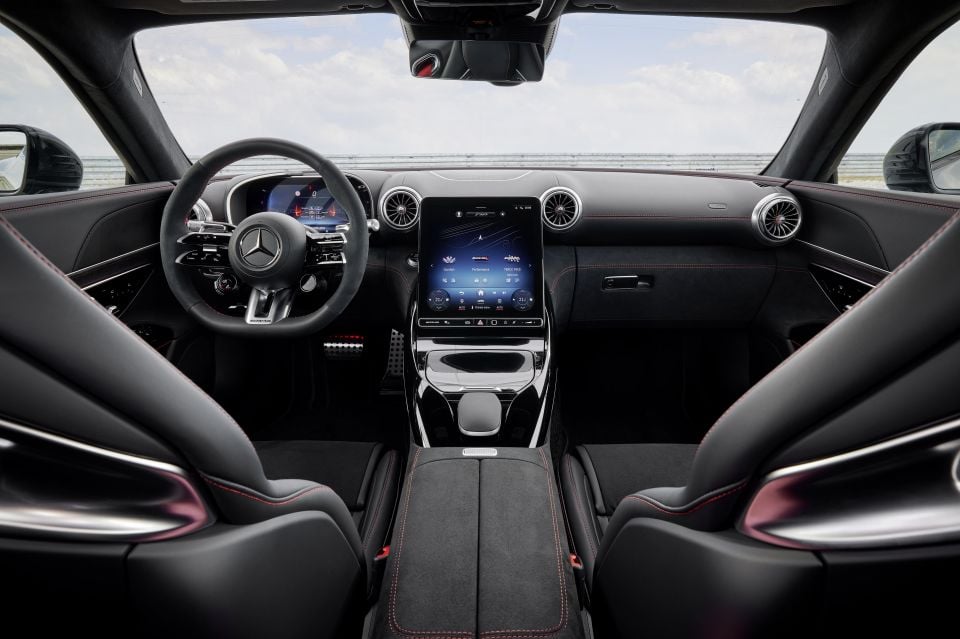
Personally, I prefer having physical buttons for the HVAC functions, but at least the climate controls are permanently displayed at the bottom of the screen.
Also less than ideal are the touch-sensitive buttons on the steering wheel as these are fiddly to operate and can occasionally be accidentally activated while you’re holding the steering wheel.
On the plus, side the AMG Performance seats do a great job of supporting your spine while also (to a large degree) keeping your torso in place even when you’re heaving the car around a racetrack such as the fast and undulating Circuito Ascari, which challenges both car and driver to the max.
A thumbs-up also for the standard AMG Performance steering wheel that’s trimmed in Nappa leather and Microcut microfibre, as it’s nice to hold and looks good too.

Apart from housing the aforementioned touch controls, below the left steering wheel spoke is a rotary dial with buttons that enable you to instantly toggle the transmission to manual-shift mode or set the stability control in Sport Handling mode, which loosens the electronic safety net.
The optional rear seats are only fit for occupants up to 1.5m tall, so these may be useful to owners with kids in their early teens or younger, but otherwise their only function is as additional stowage space in which to throw your backpack or briefcase.
If you choose to forego the optional rear seats, what you get instead is a parcel shelf, which is also useful – especially for delicate items that you may not want flying around in the boot when you’re hustling the car.
To see how the Mercedes-AMG GT stacks up against its rivals, check out our comparison tool
As with most go-faster derivatives, the GT 63 Pro also ups the ante in the powertrain department, with the 4.0-litre twin-turbo V8 fettled to thrash out 450kW of power (up 20kW) at 6500rpm and 850Nm of torque (up 50Nm) at 2500rpm.
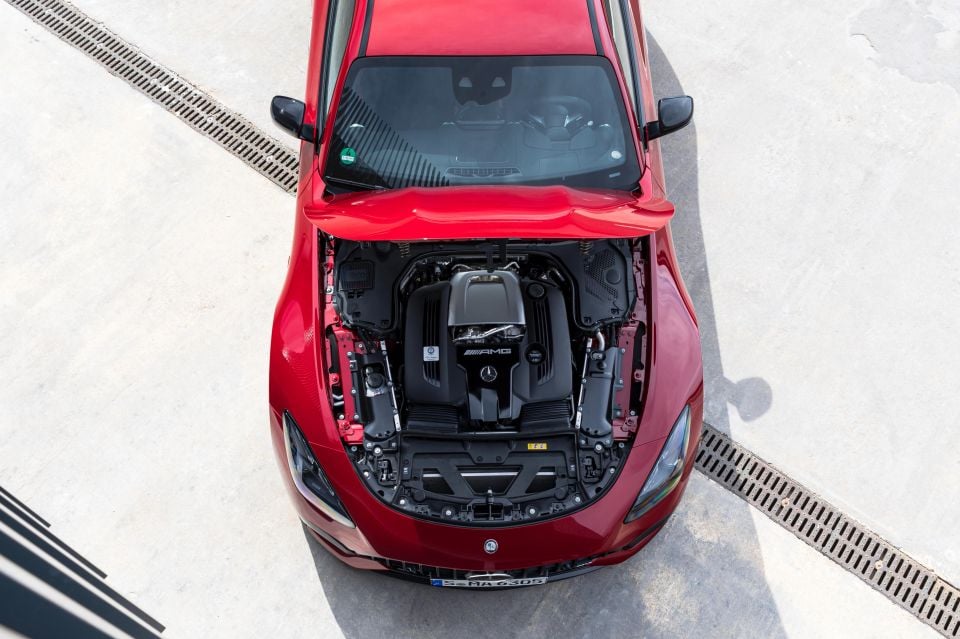
These outputs yield a 0-100km/h dash in 3.2 seconds, and 0-200km/h in 10.9s, and it’s the latter figure that’s noteworthy as it’s half a second quicker than the standard GT 63.
The GT 63 Pro is also the beneficiary of a comprehensive aero package that’s designed to reduce front-end lift (by 30kg) and boost rear downforce (by 15kg), as well as channelling more cooling air to the drivetrain and brakes.
Aiding in the cooling department are an additional pair of radiators tucked in the front wheel-arches, and the result is that the rapid GT 63 Pro can cut a succession of fast laps without getting hot and bothered.
Despite its less optimal weight distribution than before and hefty girth – the latest GT 63 Pro tips the scales at a substantial 1970kg, compared to 1650kg for its predecessor, which was called the GT R Pro – the newcomer is claimed to almost match its hardcore predecessor in terms of raw racetrack pace.
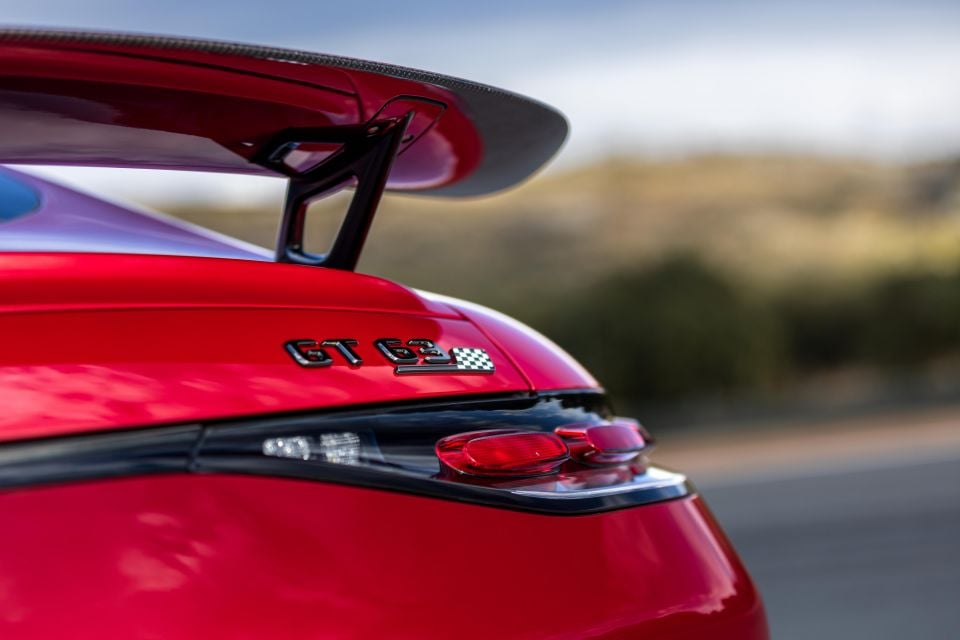
AMG spokesman Jochen Übler says the latest offering can record regular 7:11 laps around the Nurburgring Nordschleife, which isn’t too far adrift of the 7:04.632 lap posted by hotshoe race driver Maro Engel in the previous-gen GT R Pro.
More importantly, the new GT 63 Pro is claimed to make its substantial performance and dynamic envelope accessible to a much broader set of drivers as the former GT R Pro was by no means an easy beast to handle near its limits.
Where the oldie was rear-wheel drive, this time around there’s 4Matic+ all-wheel drive, four-wheel steer and active roll stabilisation to bolster traction, turn-in and mid-corner stability. More on this later.
To see how the Mercedes-AMG GT stacks up against its rivals, check out our comparison tool
Our only drive impressions of the 2025 Mercedes-AMG GT 63 Pro were gathered via a couple of on-track stints at Ascari, but even these proved surprisingly enlightening.

First thoughts on sliding into the cabin are of a newfound sense of airiness vis-à-vis the previous-gen GT, which had more of a snug fighter-jet cockpit feel due to its tighter confines, high transmission tunnel and busier switchgear/instrumentation layout.
I had no problems in conjuring up an agreeable driving position behind the wheel, and I’m told by a colleague who’s not far short of 2m tall that the same applied to him.
And where the old GT 63 Pro was equipped as standard with four-point harnesses, the new model has a conventional lap-sash belt, so you don’t need to spend a couple of minutes faffing around just to get settled in and ready to drive.
No doubt largely due to ever-tightening noise regulations, the new GT 63 Pro isn’t as vocal as its predecessor, and it fires into life in reasonably subdued fashion, especially if you’ve selected Comfort drive mode.

Given that we’re on a racetrack, the obvious thing to do was select Race mode, which ups the decibels and urgency of the soundtrack but, even so, the GT 63 Pro is by no means an eardrum-assaulting hooligan.
The 5.425km Ascari circuit is a challenging track, replete with numerous elevation changes and fast sweepers that require commitment to take at the limit.
Several corners are inspired by sections of racetracks around the world – these range from Petit Eau Rouge (Little Eau Rouge), Senna S, Copse, Laguna and even a corner named Bathurst (vaguely akin to The Cutting).
Even though the latest GT 63 Pro is a big, heavy car – a length of more than 4.7m and girth of just under two tonnes aren’t the norm for a coupe that’s purported to be track-focused – but, from behind the wheel, the perception is that you’re steering a much lighter and more compact car.

Even the fact that it’s decidedly nose-heavy has been effectively neutralised as the GT 63 Pro has razor-sharp turn-in and an ability to instantly change direction, especially evident through Petit Eau Rouge and the chicane-mimicking Rafael and Pif-Paf complexes.
The car’s agility and balance clearly benefit from the standard rear-steering system, while Active Ride Control adaptive dampers and active roll stabilisation also play their part in imbuing the chassis with a sense of tautness and precision.
Our two on-track sessions were in slightly damp conditions, and our planned third stint didn’t materialise at all as the heavens had really opened up by that stage. Even so, the less-than-ideal conditions helped to showcase the user-friendliness of the new GT 63 Pro and its ability to cater to drivers of all levels.
Where the previous-generation GT R Pro would have been much more of a handful on slip-slidey tarmac – with only two wheels putting down the power – the new model’s AWD format and electronic limited-slip rear differential mean you can mash the throttle with impunity on slow-corner exits.
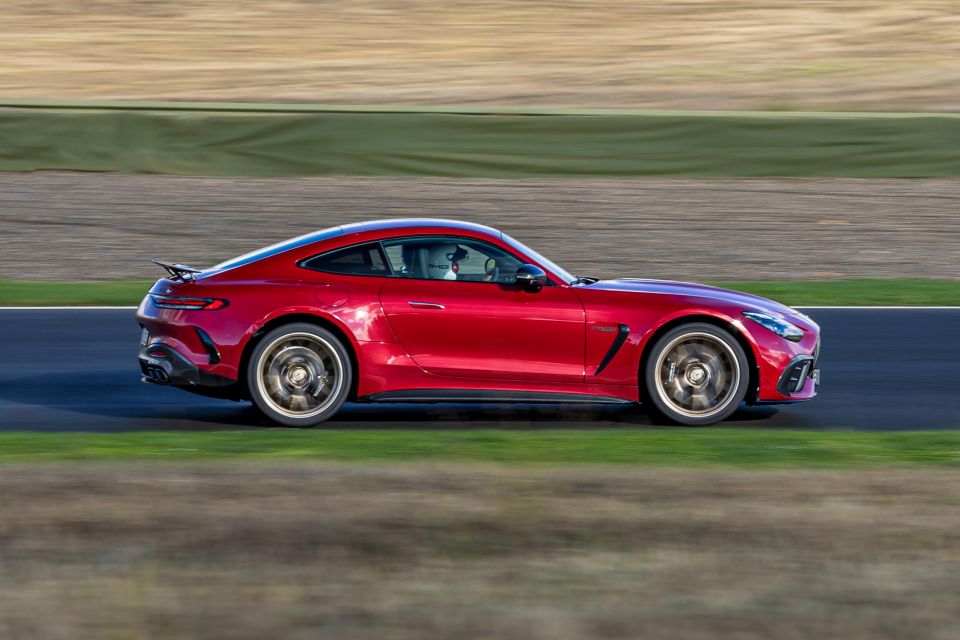
A barrage of computerised wizardry then converts 850Nm of twisting force into eye-openingly rapid forward motion, with the twin-turbo V8 unfurling the full range of its brawny vocals as you slingshot down the next straight.
It’s not by any means as thunderous as past AMG offerings, and the snap-crackle pyrotechnics on throttle lift-off are missing, but the GT 63 Pro still has a pleasing sonic signature that combines whooshing induction roar with a classical V8 growl from the quad exhaust outlets.
After toggling the stability control to Sport Handling mode to loosen the safety net after a couple of sighter laps, there are no unwelcome surprises as, even in this more liberal setting, the GT 63 Pro remains easy to punt rapidly. The car feels very analogue in its responses, despite the fact there’s plenty of electronic trickery at work beneath the surface.
We can’t comment too much on ride quality, other than to note that the car was able to glide over the slightly raised and corrugated apex curbs without jarring the spine or teeth.

Where expert car reviews meet expert car buying – CarExpert gives you trusted advice, personalised service and real savings on your next new car.
Selecting Comfort mode for the cooldown lap, the other facet of the GT 63 Pro shines through – namely, its ability to lope along with a much higher level of serenity than its predecessor could ever have mustered up.
This is probably the aspect that the majority of prospective GT 63 Pro owners will savour the most.
Standard equipment for the 63 Pro is yet to be detailed for Australia.
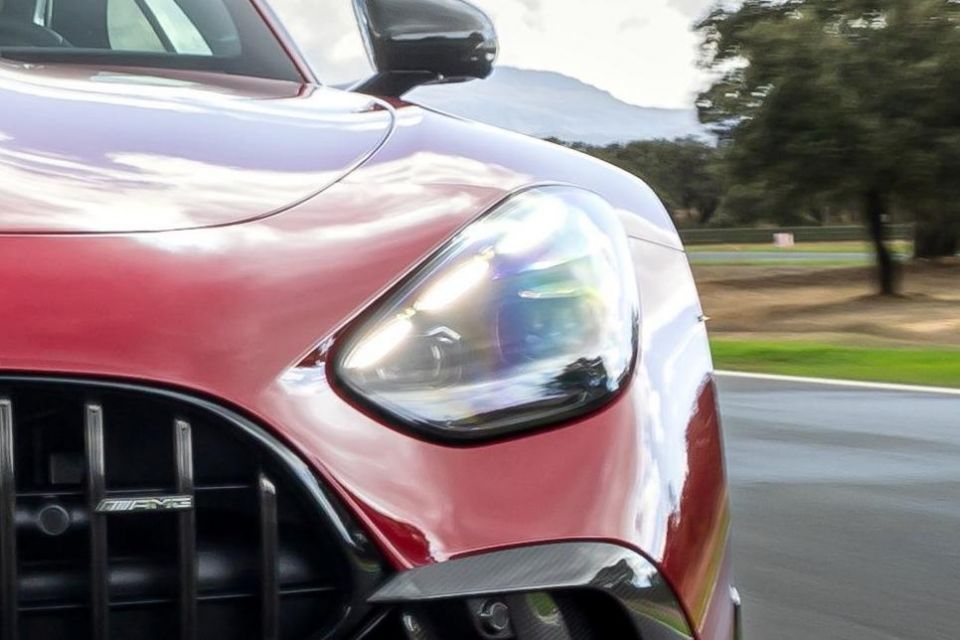
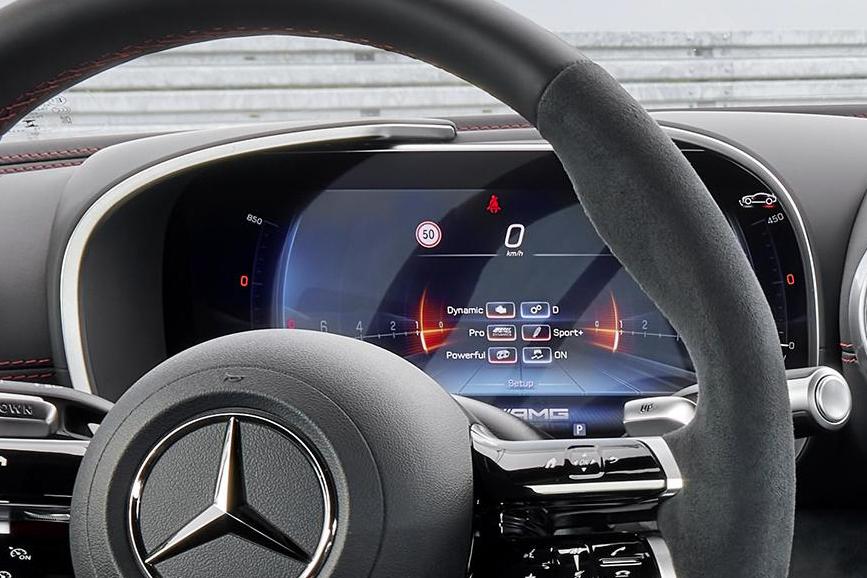

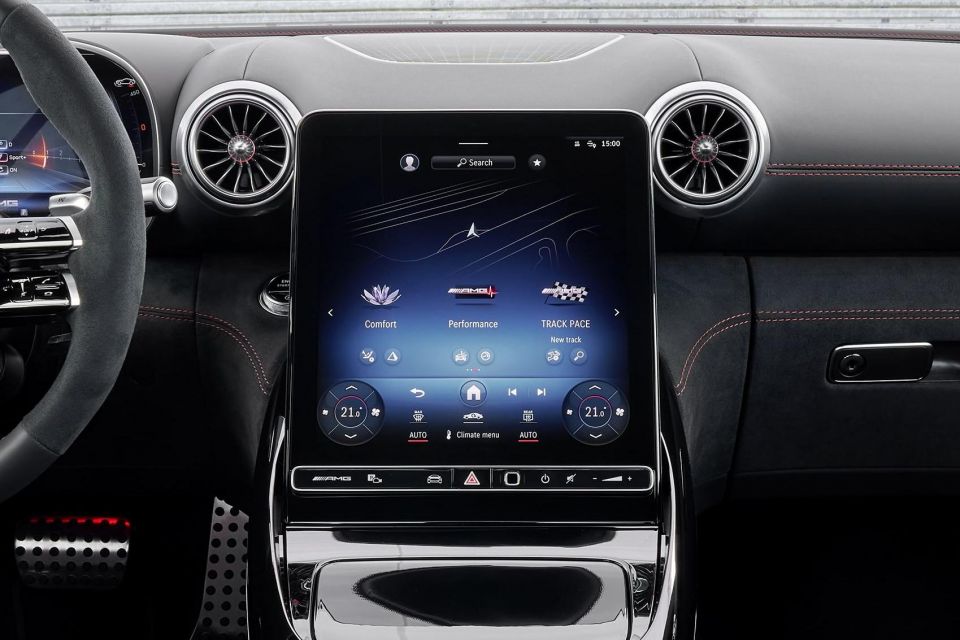
2025 Mercedes-AMG GT 63 4Matic+ highlights:
Mercedes-AMG will offer three optional packages for the new GT 63 in Australia:
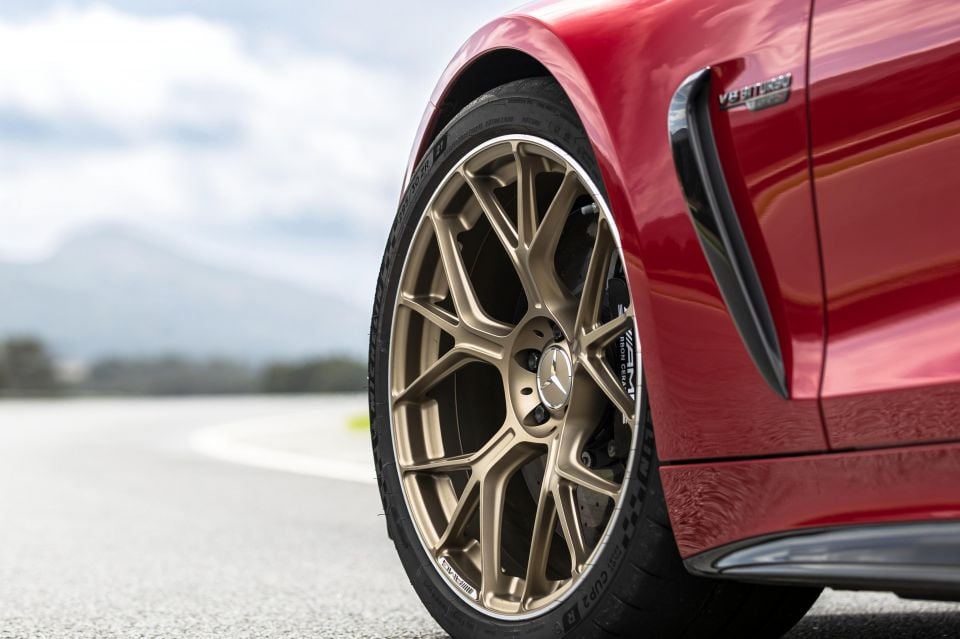

AMG Night Package ($9900)
AMG Carbon Fibre Package ($12,900)
AMG Performance Seat Package ($2490)
Colour options include:
The Mercedes-AMG GT 63 Pro adds:
The Mercedes-AMG GT has not been tested by Euro NCAP.

Standard safety equipment includes:
All Mercedes-Benz and AMG models in Australia are covered by a five-year, unlimited-kilometre warranty.

Servicing intervals and costs are yet to be detailed for any variants of the new AMG GT.
To see how the Mercedes-AMG GT stacks up against its rivals, check out our comparison tool
There are two ways of looking at this.

On the one hand, one could lament the lost sense of purity delivered by the lithe and perfectly balanced old GT R Pro, which embodied an ideal recipe for a track-capable roadgoing sportscar.
The flipside is that it was largely a one-track pony, and it wouldn’t be anyone’s first choice for a cross-continent journey or even a weekend getaway.
Its uncompromising ride and tight living quarters were slightly at odds for car that largely targeted the grand-tourer segment. Very few AMG GT owners ever ventured onto a racetrack.

This being the case, the second-generation Mercedes-AMG GT 63 Pro comes across as a better-rounded offering as it’s undoubtedly far more usable day-to-day, for all the reasons we’ve already covered at length.
The fact it’s able to fulfil the brief for a daily driver or lengthy road-trip companion while still being a surprisingly rapid and engaging track car is a case of win-win.
It’s also no bad thing that the car’s visuals – denoted by a hunkered-down stance, muscular shoulders and snarling face – are extremely easy on the eye.

Interested in buying a Mercedes-AMG GT? Get in touch with one of CarExpert’s trusted dealers here
Click the images for the full gallery
MORE: Everything Mercedes-AMG GT
Where expert car reviews meet expert car buying – CarExpert gives you trusted advice, personalised service and real savings on your next new car.


Matt Campbell
6 Days Ago


James Wong
5 Days Ago


Max Davies
3 Days Ago


Josh Nevett
3 Days Ago


Josh Nevett
2 Days Ago


Paul Maric
22 Hours Ago